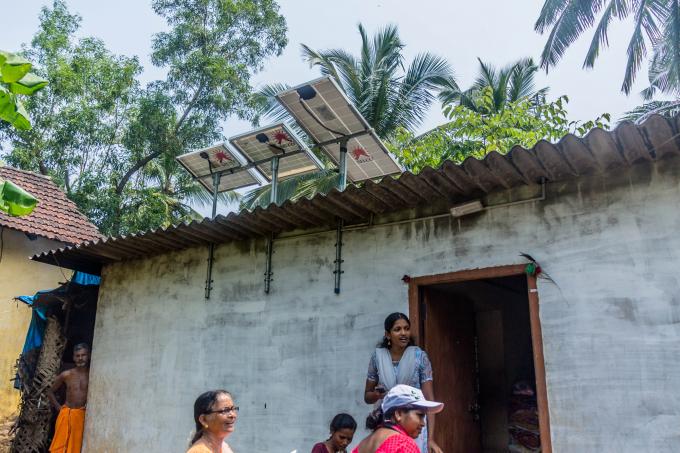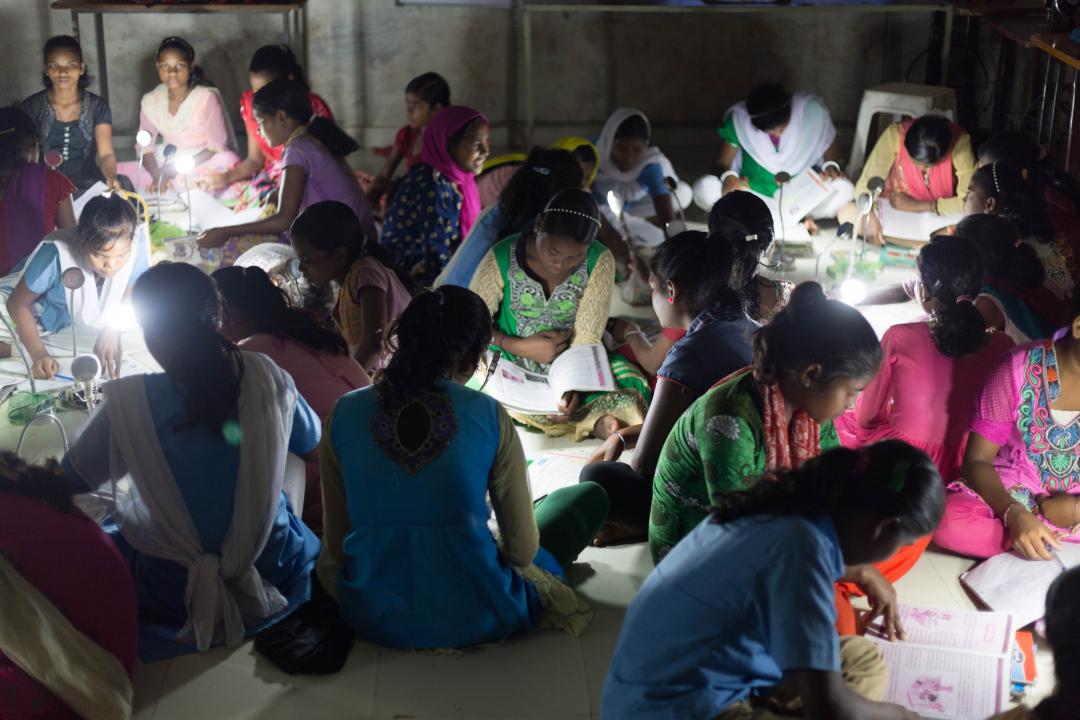Decentralised energy unlocks opportunity, the right financing unlocks decentralised energy
SELCO is focussed on solving social and environmental challenges by making decentralised solar power accessible to those who have been living without access—or with unreliable access—to energy. How do you do this?
There is a difference between what one calls expensiveness, affordability and low cost. These are three different terms. For example, if you talk about a Mercedes car, you say it is expensive, but if somebody gave me 20-year financing where I have to pay $20 per month, it suddenly becomes affordable.
When people look at technology for the underserved population, immediately they look at the cost of the system without asking the following questions: What are people presently spending on? What could be the potential savings or earnings in the future because of the intervention? Is there an appropriate financial product that could match the technology intervention? Any intervention at the doorstep of the poor is a combination of technology, finance and market linkages.
At SELCO, we look at all three of these things. Using lighting as an example, what is the customer losing because there is no light? If one had a solar powered sewing machine, how much extra could they earn? Are those additional earnings equivalent to what one would need to pay to the bank? Responding to these questions requires not only technology innovations but financing innovations and social engineering, too.
What makes SELCO’s business model successful?
The primary thing that makes our business sustainable is that we do not focus only on the product. It's much more than that. When you buy a consumptive product—like a TV—you might pay attention to the features, but in general it’s just a TV. But looking at the reverse, when you buy an asset—like a house, or you start a factory—you get your friends’ or your parents’ advice.
A solar system is an asset. The end-user, the poor, needs to be completely sure about the purchase because if anything is not good, it can actually push him or her back into poverty or into some sort of financial distress. To be sure, they need to know who is selling it and trust who they are buying it from. These aspects are the DNA of SELCO.

One of the key reasons that SELCO is successful is because we don't take resumes for employment. If you and I did PhDs on sugar cane, we would be called experts of sugar cane. A farmer with 40 years of experience in sugar cane will never be called an expert, because he or she does not have a PhD. As a society, we don't give enough respect to people with experience.
If you, via your business, are serving the bottom 30% of the economic pyramid, the people who run the business should also be from the bottom 30% of the pyramid. Otherwise, it is a different form of colonisation. And that is why, if you look at SELCO INDIA, a for-profit, 600 people—99% of my colleagues—come from the client base.
During your acceptance speech at the 2018 Skoll World Forum, you mentioned that you have learned from the financial innovations in the agricultural sector. Can you explain?
In India, the agricultural-focussed financial institutions have a history of creating financial products according to the cashflow of the farmers. For example, a paddy farmer would get five-year financing with a payment at the end of every year after the harvest. For a peanut farmer it was twice a year... a sugar cane farmer twice a year, all depending on the farmer’s cash flows. This is quite different than in normal financing, where everybody is on the same monthly schedule.
The best financial advice I ever learned was from a street vendor who said, “300 rupees a month is expensive, but 10 rupees a day is fine” because her cash flow was on a daily basis. So, we have to create financial products that match her cash flow.
How does SELCO then structure those financial products?
We work with the local banks and other grassroots financial institutions. We have been able to convince banks, which normally do asset-based financing, to finance solar. For example, there are 30-40 very poor households who, on average, spend $2 to $2.50 per month on kerosene. And another dollar on charging cell phones.
Their monthly earnings are $30, from which about $4 goes into energy. In a year, that’s $48—let’s say $50—which is $250 in five years. Well, a solar system with five-year financing at 14% interest costs $200. Now, the question is not affordability. It's not technology. The question is, will the banks finance these people who earn only $30?
For the first 30 houses we put in a 100% guarantee. After six months, we checked in with the bank and they reported that the loan collection was great. We asked the bank, if you knew this information six months ago, what financing would you have offered? They said "20%," so we removed 80% of our guarantee.
Meanwhile, the customer shared that “once I finish my solar loan, I will take a loan for a sewing machine.” What she meant is, “I have become bankable.” The beauty of decentralised energy is that it pushes people multiple rungs up the social ladder. As you can see, philanthropic money should not go into subsidising solar, but instead into creating the guarantee, which unlocks the opportunity.

Your customer’s ability to access the right financial mechanism is essential to making your products accessible to them. Can you speak a bit more to this?
SELCO, today, has relationships with more than 15 to 20 financial institutions. So, when a colleague convinces an end-user to invest in a system, they will take that customer to the nearest bank for them to get the loan. Then, SELCO installs the system. Within a stipulated period, usually 45 days, the bank pays SELCO directly.
SELCO focusses on financial institutions that are coming up with new products. For example, whenever a bank comes up with a livelihood product, SELCO will go and make sure that part of the livelihood product can be given for solar loans. We piggyback on existing or new financial products that these banks come up with.
Donor money is the most expensive money in the world. It should be utilised for ecosystem-building, not for capital cost reduction.
What advice do you have for other inclusive business entrepreneurs who want to understand what financing options are best for them?
The advice we give to lot of younger entrepreneurs is, "Please, don't sign the dotted line just because somebody is giving you the money." Sometimes, working with less “philosophically minded” investors can create pressures that make it easy to forget the problem you set out to solve in the first place. And solving problems is meant to be the whole point of a social business.

